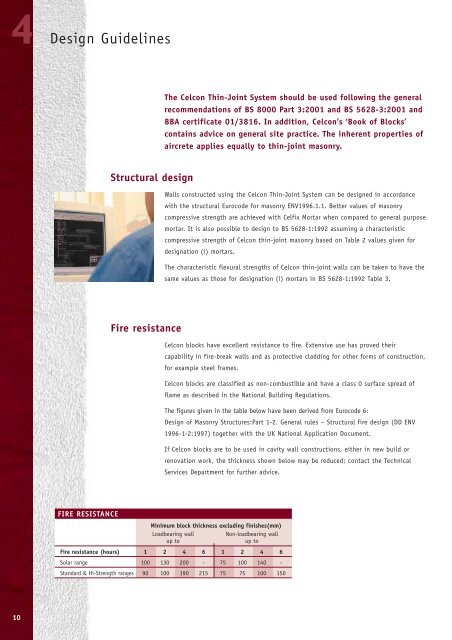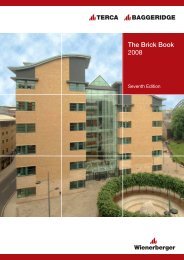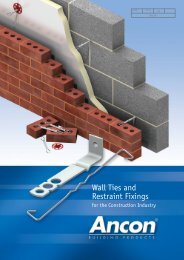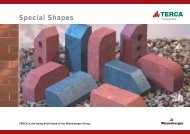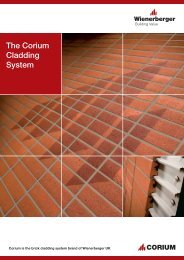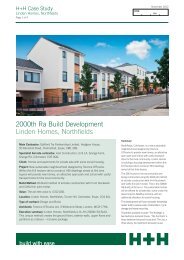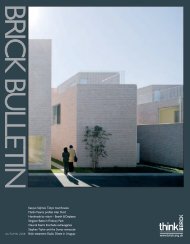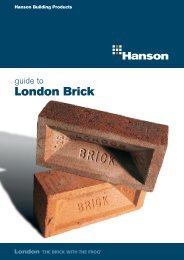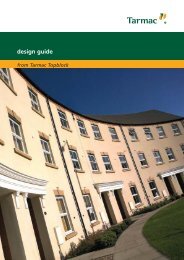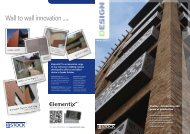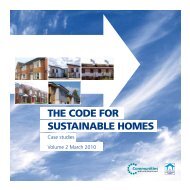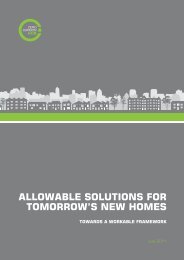The Celcon Thin-Joint System A Definitive Guide - Masonry First
The Celcon Thin-Joint System A Definitive Guide - Masonry First
The Celcon Thin-Joint System A Definitive Guide - Masonry First
You also want an ePaper? Increase the reach of your titles
YUMPU automatically turns print PDFs into web optimized ePapers that Google loves.
4 Design <strong>Guide</strong>lines<br />
10<br />
FIRE RESISTANCE<br />
Structural design<br />
Fire resistance<br />
<strong>The</strong> <strong>Celcon</strong> <strong>Thin</strong>-<strong>Joint</strong> <strong>System</strong> should be used following the general<br />
recommendations of BS 8000 Part 3:2001 and BS 5628-3:2001 and<br />
BBA certificate 01/3816. In addition, <strong>Celcon</strong>’s ‘Book of Blocks’<br />
contains advice on general site practice. <strong>The</strong> inherent properties of<br />
aircrete applies equally to thin-joint masonry.<br />
Walls constructed using the <strong>Celcon</strong> <strong>Thin</strong>-<strong>Joint</strong> <strong>System</strong> can be designed in accordance<br />
with the structural Eurocode for masonry ENV1996.1.1. Better values of masonry<br />
compressive strength are achieved with Celfix Mortar when compared to general purpose<br />
mortar. It is also possible to design to BS 5628-1:1992 assuming a characteristic<br />
compressive strength of <strong>Celcon</strong> thin-joint masonry based on Table 2 values given for<br />
designation (i) mortars.<br />
<strong>The</strong> characteristic flexural strengths of <strong>Celcon</strong> thin-joint walls can be taken to have the<br />
same values as those for designation (i) mortars in BS 5628-1:1992 Table 3.<br />
<strong>Celcon</strong> blocks have excellent resistance to fire. Extensive use has proved their<br />
capability in fire-break walls and as protective cladding for other forms of construction,<br />
for example steel frames.<br />
<strong>Celcon</strong> blocks are classified as non-combustible and have a class 0 surface spread of<br />
flame as described in the National Building Regulations.<br />
<strong>The</strong> figures given in the table below have been derived from Eurocode 6:<br />
Design of <strong>Masonry</strong> Structures:Part 1-2. General rules – Structural fire design (DD ENV<br />
1996-1-2:1997) together with the UK National Application Document.<br />
If <strong>Celcon</strong> blocks are to be used in cavity wall constructions, either in new build or<br />
renovation work, the thickness shown below may be reduced; contact the Technical<br />
Services Department for further advice.<br />
Minimum block thickness excluding finishes(mm)<br />
Loadbearing wall Non-loadbearing wall<br />
up to up to<br />
Fire resistance (hours) 1 2 4 6 1 2 4 6<br />
Solar range 100 130 200 - 75 100 140 -<br />
Standard & Hi-Strength ranges 90 100 190 215 75 75 100 150


